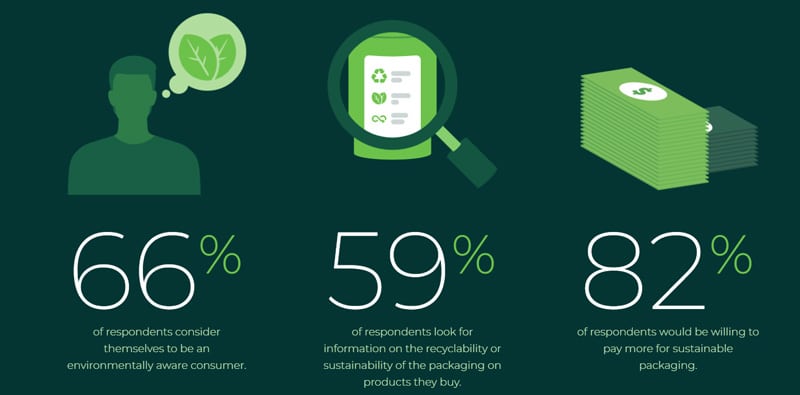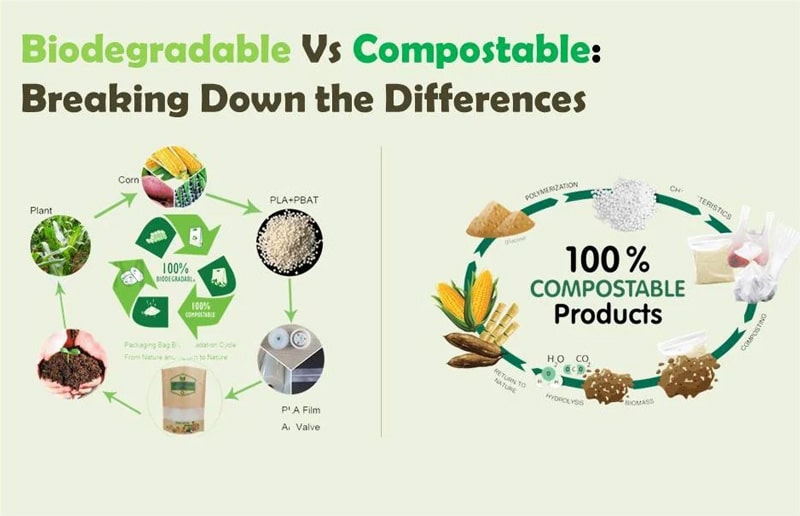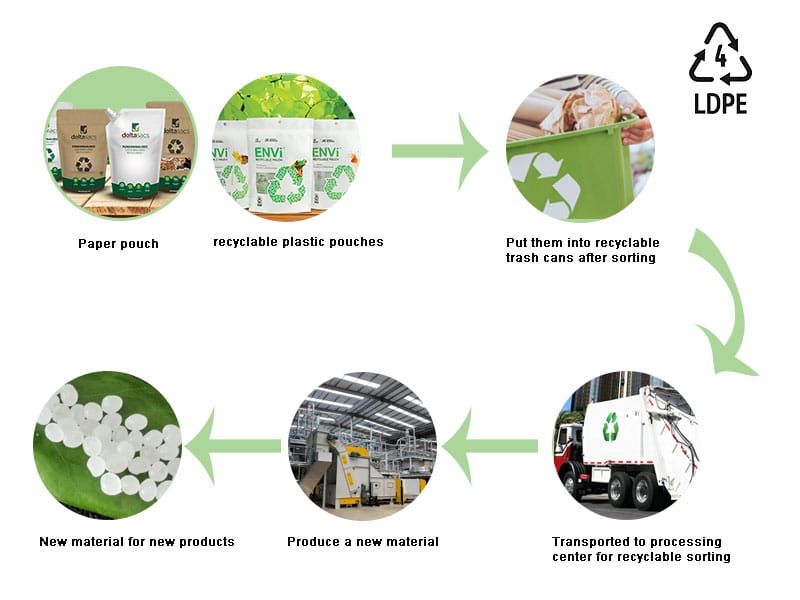What is Green Packaging? Everything you need to know
According to a report by the United Nations Environment Program, about 8 million tons of plastic waste enter the ocean every year. This poses a huge threat to marine ecosystems and marine life, and some plastic waste has even entered the food chain. It can be seen that taking actions to reduce the use of plastic packaging, promoting the development and promotion of sustainable green packaging alternatives, and improving plastic waste management and recycling systems are crucial to solving this problem.
A new data from Trivium Packaging revealed that over 80% of consumers expressed their willingness to purchase products with environmentally friendly packaging. 82% of consumers across age demographics showed a willingness to pay more for sustainable packaging, up 4 points from 2022, and 8 points since 2021. The survey also revealed that products with eco-certifications perform better in terms of sales, indicating that green packaging can enhance product appeal and competitiveness in the market.

What is Green Packaging?
Green packaging, also known as sustainable packaging, encompasses a range of practices aimed at reducing the environmental impact of packaging throughout its lifecycle. It involves using eco-friendly materials, optimizing packaging design for resource efficiency, and promoting recycling and waste reduction. The ultimate goal of green packaging is to minimize carbon emissions, conserve resources, and protect the planet.

Eco friendly material for Green Packaging
Eco-friendly materials have emerged as a game-changer in the realm of green packaging, captivating the attention of wholesale packaging suppliers, as well as coffee, tea, and food brands and manufacturers. As awareness of environmental concerns continues to grow, the demand for green packaging solutions has surged. One of the key components in achieving sustainability goals is the selection of eco-friendly materials. These materials, derived from renewable resources, offer numerous benefits, ranging from reduced carbon footprint to enhanced recyclability.
Biodegradable and Compostable Materials
Biodegradable plastics derived from plant sources like cornstarch or sugarcane, provide a viable alternative to traditional petroleum-based plastics. These materials break down naturally, reducing the accumulation of non-biodegradable waste in landfills and oceans.

Recyclable and Recycled Materials
Additionally, recyclable materials like cardboard, paper, and glass offer the potential for a closed-loop recycling system, where packaging can be repurposed into new products. This not only conserves resources but also minimizes environmental impact.

Environmental Benefits of Green Packaging
Embracing green packaging offers numerous benefits for wholesale packaging suppliers and food brands alike. From reducing carbon footprints and conserving natural resources to enhancing brand image and complying with environmental regulations, the advantages are clear. By adopting sustainable packaging practices, businesses can meet the demands of eco-conscious consumers, drive cost savings, and contribute to a greener future.
Reduced Carbon Footprint
Sustainable materials in packaging can reduce carbon emissions compared to traditional packaging methods. By embracing green packaging, wholesale packaging suppliers can play a vital role in mitigating climate change.
Conservation of Natural Resources
Green packaging promotes the conservation of natural resources. For instance, using recycled materials saves trees and reduces the strain on forests. Based on data from US EPA, every ton of recycled paper used in packaging saves approximately 17 trees, 7,000 gallons of water, and 380 gallons of oil.
Waste Reduction and Recycling
One of the key advantages of green packaging is waste reduction and increased recycling rates. According to the Environmental Protection Agency (EPA), implementing sustainable packaging practices can lead to a significant reduction in waste sent to landfills. By utilizing recyclable materials and encouraging consumers to recycle, wholesale packaging suppliers can contribute to a circular economy and minimize environmental impact.
Business Benefits of Green Packaging
Enhanced Brand Image and Reputation
Adopting green packaging showcases a company’s commitment to sustainability, resonating with environmentally conscious consumers. A data Trivium Packaging revealed that 71% of consumers have chosen a product in the last six months based on its sustainability credentials. By aligning their brand with green packaging practices, wholesale packaging suppliers and food brands can enhance their brand image and gain a competitive edge.
Cost Savings in Packaging and Transportation
Green packaging emphasizes lightweight design to reduce material usage and transportation costs. Lightweight packaging not only minimizes resource consumption but also decreases carbon emissions during transportation.
Compliance with Environmental Regulations
Regulatory bodies are increasingly emphasizing sustainable packaging practices. By proactively incorporating green packaging solutions, wholesale packaging suppliers and food brands can ensure compliance with environmental regulations, mitigating the risk of penalties or reputational damage. Aligning with these regulations also positions businesses as responsible industry leaders.
Green Packaging in Different Industries
The widespread adoption of green packaging across industries, including wholesale packaging, coffee and tea, food, and the pet food sectors, highlights its importance in meeting consumer demands and promoting sustainability. By offering sustainable packaging options, businesses can enhance their brand image, appeal to eco-conscious consumers, and contribute to a more environmentally friendly future.
Wholesale Packaging Suppliers
For wholesale packaging suppliers, providing green packaging solutions is essential in meeting the demands of environmentally conscious businesses. By offering eco-friendly alternatives, suppliers can cater to this growing market and establish themselves as leaders in the industry.There are several sustainable packaging options available to wholesale packaging suppliers. Biodegradable and compostable materials, such as plant-based plastics and paperboard, are gaining popularity.
Coffee and Tea Industry
The coffee and tea industry has embraced green packaging to align with consumer values. Biodegradable coffee tea bags, compostable coffee tea bags, and recyclable coffee tea bags are popular choices. Green packaging not only appeals to environmentally conscious consumers but also reflects the industry’s commitment to sustainability. The coffee and tea industry is witnessing several sustainable packaging trends. Additionally, the adoption of innovative packaging designs, such as reusable tins or pouches, enhances sustainability efforts.
Food Industry
The food industry is actively exploring green packaging solutions to reduce its environmental impact. Consumers are increasingly concerned about food safety and sustainability. As a result, biodegradable food containers, compostable packaging films, and recyclable food packaging are gaining traction. Numerous innovations have emerged in sustainable food packaging. For example, edible packaging made from seaweed or starch-based materials provides an eco-friendly alternative.
Pet Food Industry
The pet food industry is embracing eco-conscious packaging practices to minimize its ecological footprint. This includes reducing packaging waste through right-sized packaging, utilizing renewable materials, and optimizing distribution logistics.
Challenges and Future Directions
In the pursuit of sustainable packaging solutions, the industry encounters several challenges. These obstacles hinder the widespread adoption of green packaging and call for innovative strategies and collaborations. Overcoming challenges and embracing future directions in green packaging is essential for wholesale packaging suppliers, coffee and tea brands, and food manufacturers. Through collective efforts and innovative strategies, we can pave the way for a greener, more environmentally conscious future.
One significant challenge lies in limited consumer awareness and education regarding green packaging. Educating consumers about the environmental benefits and importance of sustainable choices is vital to encourage adoption. Additionally, cost considerations pose another hurdle. However, advancements in technology and economies of scale are narrowing the cost difference between conventional and sustainable packaging, making the shift more feasible in the long run.
Researchers are exploring biodegradable packaging materials derived from algae-based plastics and mycelium packaging from mushroom roots. These materials offer reduced environmental impact and biodegradability. Furthermore, integrating smart packaging solutions with sensors and indicators can enhance product freshness, quality, and consumer safety, reducing food waste.
Industry-wide collaboration among wholesale packaging suppliers, food brands, manufacturers, and government agencies is crucial. Establishing sustainability standards, sharing best practices, and fostering innovation collectively contribute to overcoming challenges. Moreover, partnerships with recycling and waste management industries can create a circular economy for packaging materials, ensuring effective recycling and reuse.
Conclustion
In conclusion, green packaging is not just a passing trend but a necessity for a sustainable future. Green packaging is not only conducive to the development of enterprises and enhancing brand image, but also conducive to protecting the environment. All walks of life and the government need to work together to promote green packaging and develop green packaging that is beneficial to the environment,and secure a sustainable future for generations to come.
